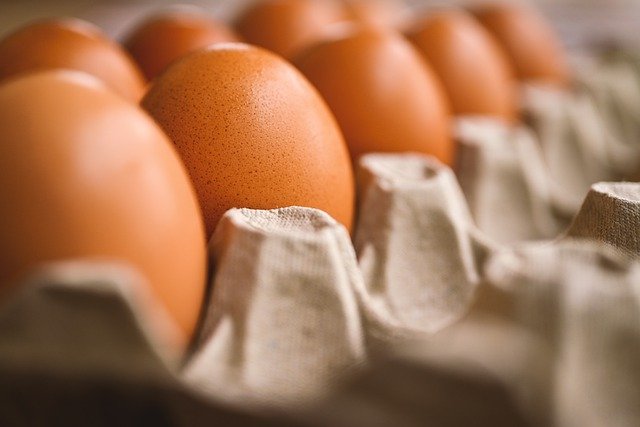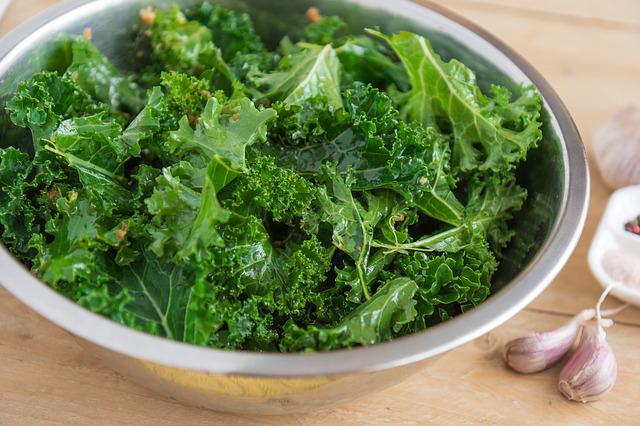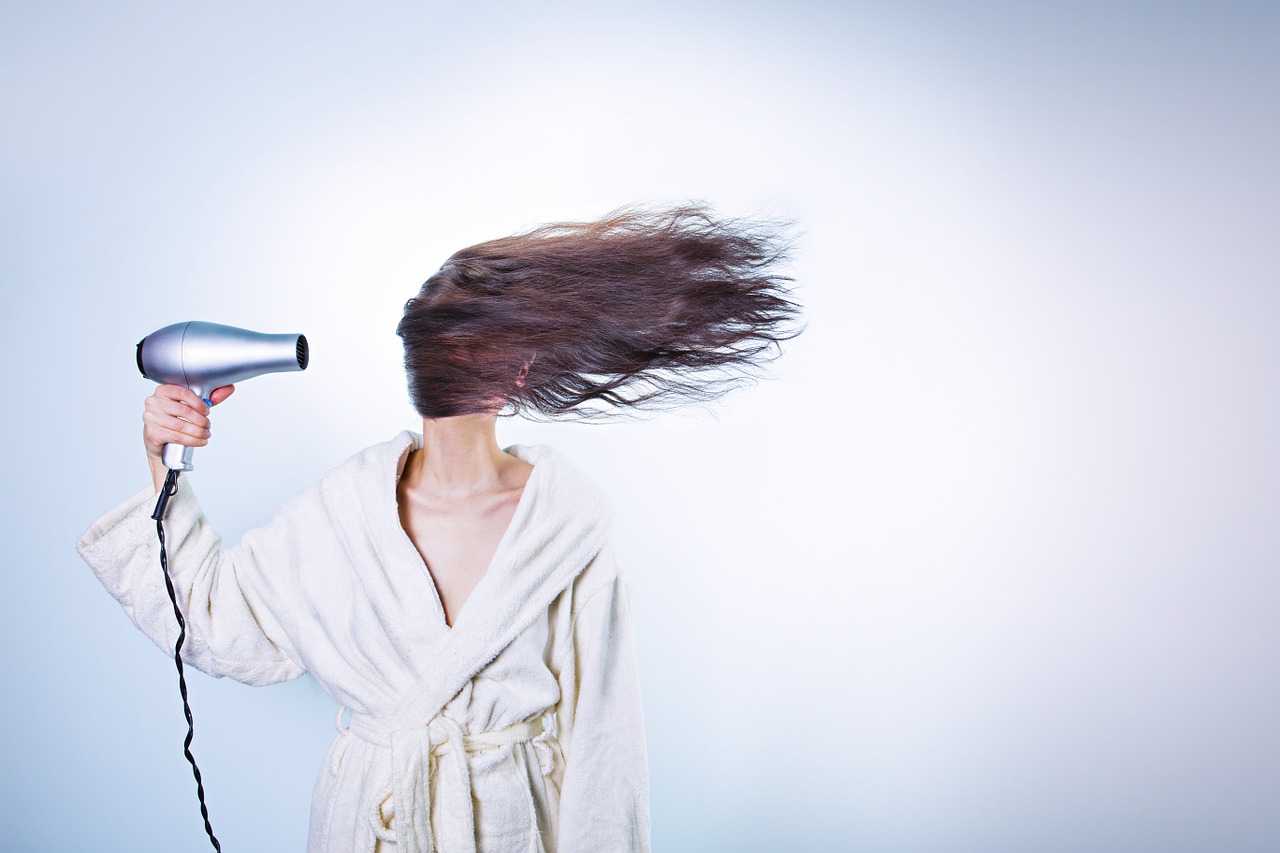If you’ve ever been to a salon or have skimmed through the shampoo isle of your local grocery store, chances are you’ll find tons of treatments and products for your hair that has been labelled with keratin on it.
If you’re suffering from dry, brittle, and unmanageable hair, keratin might just be the answer to your worries. Plus, salon treatments and hair products aren’t the only way you can get more keratin – this can be obtained through food as well. In this post, we’ll be presenting 10 common keratin rich foods.
What is Keratin?
Keratin is a structural protein that can be found in our hair, nails, and skin, but it can also be found in our internal organs. It’s the main component of the strong and fibrous strands that make up our hair, skin, and nails, protecting it from easily tearing and scratching.
Here’s what keratin does for your hair and nails[1]:
- Protection against environmental damage. As our hair becomes exposed to the sun’s UV rays and the toxic pollution in the air, the microscopic protein strands in our hair will be damaged, resulting in dry and brittle hair. By supplying our hair with more keratin, our hair strands are able to withstand damage and retain its quality.
- It promotes hair growth. Because keratin makes up the majority of our hair strands, it’s also an essential component when it comes to creating new hair. When your body has more keratin, it will become easier for our hair to grow.
- It reduces frizz and smoothens the hair. Each strand of your hair has overlapping outer layers called cuticles. When the hair is damaged, your cuticles become raised, allowing moisture to escape which causes it to appear frizzy and dry. Keratin helps keep your cuticles smooth, preventing moisture from escaping, making your hair appear smooth and shiny.
- It strengthens nails. Aside from your hair, the nails are also made up of keratin layers – around 50 per fingernail and 100 for each toenail. Keratin will provide your nails with the same benefits it does with hair – protecting it from environmental damage as well as retaining moisture. This helps keep your nails strong and elastic, as opposed to brittle and thin nails.
The body actually creates its own keratin. But due to damage caused by environmental factors (UV rays, pollutions, stress, etc.), the keratin in our hair and nails may not be enough to recuperate from what it is exposed to everyday.
Thankfully, keratin isn’t just limited to hair products or treatments that some people may be sensitive to. Keratin can also be sourced from foods that naturally contain keratin or will naturally boost your keratin production.
10 Common Keratin Rich Foods
Here are some examples of foods that you can easily incorporate in your diet to boost your keratin levels. Healthy eating won’t just make your body look good – it will benefit your hair and nails, too![2]
- Eggs
As one of the most common and affordable foods out there, egg makes a great source of proteins that will boost your keratin production.
Aside from proteins, eggs also contain biotin, a nutrient that is essential in synthesizing keratin. A single egg contains approximately 10mcg of biotin, which is already 33% of your daily recommended intake. Eggs are also rich in folate, a nutrient that is necessary for maintaining healthy hair follicles.
Eggs also contain vitamin B5, which is known to improve the hair’s flexibility, strength, and shine.

- Onions
The onion is a humble ingredient that is used in nearly every cuisine to add an aromatic flavor to dishes.
Although it doesn’t have any proteins, onions can boost keratin production by providing the amino acid L-cysteine, which is an essential component of keratin. Additionally, onion also contains folate, a nutrient that is needed to maintain healthy hair follicles.
- Salmon
A delicacy enjoyed by many; salmon is one of the best sources of protein out there. It’s also rich in omega-3 fatty acids, a nutrient that is commonly sold as fish oil supplements. This omega-3 fatty acid has been found to promote hair growth, which is perfect for those who are aiming for thicker hair.[3]
Salmon is also a great source of biotin, which is required for the metabolization process which leads to the creation of keratin. An 85 grams serving of salmon can have approximately 5mcg, or 17% of your daily recommended intake.
The next time you’re craving for sushi or baked salmon, feel free to eat your heart out for the sake of healthier and fuller hair.
- Sweet Potato
Sweet potatoes are one of the best sources of carbohydrates out there, as it is rich in antioxidants and nutrients for such a humble vegetable.
One of the main antioxidants found in sweet potatoes are called carotenoids, specifically beta-carotene. These compounds are what gives sweet potatoes their signature vibrant colors that range from orange to purple. These carotenoids are then converted into vitamin A inside our bodies, a vitamin that is essential to the production of keratin.

The next time you’re craving for potatoes, you can try sweet potatoes instead for their higher carotenoid content.
- Sunflower Seeds
These tiny seeds that are commonly enjoyed as a savory snack. As little as they are, sunflower seeds are actually packed with proteins and nutrients.
One of these nutrients is biotin, a vitamin that is essential to maintaining healthy hair. A 35 grams serving of sunflower seeds contains approximately 2.6 mcg of biotin, which is 9% of the daily recommended intake.
- Mangoes
Mangoes are a sweet and refreshing tropical fruit that is also packed with nutrients.
Mangoes contain provitamin A, which is a term for compounds that are processed into vitamin A once it enters the body. Vitamin A is an essential nutrient that all cells need for growth, and this includes our hair, which is also considered as the fastest growing tissue in the human body.
Aside from boosting hair growth, vitamin A also helps our scalp produce sebum, which is our natural oily secretion that keeps our scalp and hair moisturized.[5]
For each 165 grams serving, mangoes can provide us with 89 mcg of provitamin A or nearly 10% of our daily recommended intake.
Mangoes also contain other nutrients that can benefit the hair, such as vitamin C and folate.
- Garlic
Just like onions, garlic is commonly used as an aromatic flavoring for many of our well-loved dishes.
Another of their similarities is that garlic also provides us with compounds that turns into L-cysteine, an essential component of keratin. Although further research is required, some studies have found that garlic extract is able to protect keratinocyte cells from UV damage.[6]
- Kale
Kale is a superfood that has seen a surge of popularity among health enthusiasts in recent years. It is truly deserving of the title, as it is one of the most nutrient dense vegetables that exist.
One of the nutrients that kale has is provitamin A. As we have mentioned, vitamin A is essential for both hair growth and maintaining hair quality.

Kale also contains Vitamin C, of which it contains a significant amount per serving. Vitamin C is a powerful antioxidant that is known to protect our cells from UV damage, an environmental factor that can cause dryness and frizz to our hair.[7]
- Beef Liver
It’s not really a common delicacy, but beef liver is one of the most potent sources of biotin that exists. Even just 85 grams serving of beef liver will provide you with 31mcg of biotin, which is already 103% of your daily recommended intake!
The same serving can also give you incredibly high amounts of vitamin A at 7960 mcg, which is 884% of your daily recommended intake. It’s also a great source of protein, too!
Aside from that, beef liver is also rich in nutrients that will also benefit your hair, such as vitamin B12, folate, riboflavin, and iron.
- Carrots
Carrots are another widely consumed vegetable, which is also commonly associated with improving eye health.
The same vitamins present in carrots which benefits your eyes will also give you healthier hair.
Carrots are high in beta carotene, the carotenoids that are also present in sweet potatoes. And just like in sweet potatoes, this carotenoid gives carrots its signature orange color.
Once beta carotene enters your body, it is processed into vitamin A, which is essential for hair growth. Carrots are also a great source of vitamin C, which offers protective benefits for your hair and nails.
Conclusion
If you’re suffering from dry, brittle, or damaged hair and nails, salon keratin treatments can get very expensive for you. Worse, your body may not react well to the chemicals that are typically part of the treatments and products available for your hair.
Luckily, mother nature continues to provide us with organic remedies for our problems.
Aside from shampoos, treatments, or conditioners, keratin can also be sourced directly from the food we eat. This is arguably the best way you can get keratin, as these nutritious foods will also provide you with benefits beyond improving your hair and nails.
With a clean, processed food-free diet, and a healthy lifestyle, your hair is set to look better than it ever did.
References:
[1] Santalesa, V. (2017, March 8) The Benefits of Keratin for Hair and Nails. Retrieved from vineveracosmetics.com/2017/03/08/benefits-keratin-hair-nails/
[2] Link, R. (2020, August 17) 10 Foods That Boost Your Body’s Keratin Levels. Retrieved from https://www.healthline.com/nutrition/keratin-rich-foods
[3] Kang, J. I., Yoon, H. S., Kim, S. M., Park, J. E., Hyun, Y. J., Ko, A., Ahn, Y. S., Koh, Y. S., Hyun, J. W., Yoo, E. S., & Kang, H. K. (2018). Mackerel-Derived Fermented Fish Oil Promotes Hair Growth by Anagen-Stimulating Pathways. International journal of molecular sciences, 19(9), 2770. https://doi.org/10.3390/ijms19092770
[4] Renee, J. (2019, August 26) Keratin-Rich Foods. Retrieved from https://www.livestrong.com/article/270792-keratin-rich-foods/
[5] Everts H. B. (2012). Endogenous retinoids in the hair follicle and sebaceous gland. Biochimica et biophysica acta, 1821(1), 222–229. https://doi.org/10.1016/j.bbalip.2011.08.017
[6] Pazyar, N., & Feily, A. (2011). Garlic in dermatology. Dermatology reports, 3(1), e4. https://doi.org/10.4081/dr.2011.e4
[7] Darr, D., Combs, S., Dunston, S., Manning, T., & Pinnell, S. (1992). Topical vitamin C protects porcine skin from ultraviolet radiation‐induced damage. British Journal of Dermatology, 127(3), 247-253.

